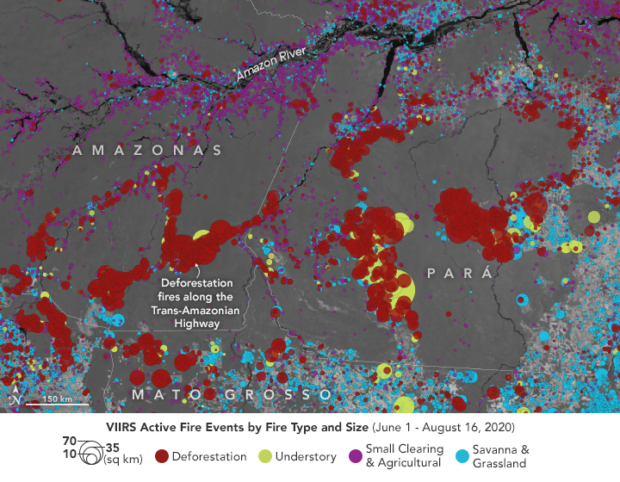Due to the difference in the seasons and in weather systems, the timing of fire season in the Southern Hemisphere typically varies compared to that of the U.S. Fall season in the Northern Hemisphere coincides with spring in the Southern Hemisphere. During fire season in the Southern Hemisphere, Australia experiences bushfires, while treacherous rainforest fires have affected the Amazon in recent years.
Bushfires in Australia
Generally, the peak bushfire season occurs during the dry winter and spring in Northern Australia and during the spring and summer for Southern Australia. Weather systems are complex and work differently in Australia’s temperate and tropical regions compared to what is seen in California. Severe bushfire conditions are influenced by a combination of these systems. In most cases hot, dry winds blowing from central Australia have the largest impact. Similarly to what occurs in the western U.S., bushfires are more likely to ignite and to continue to burn during hot, dry, and windy conditions.
In southern Australia, cold fronts have the largest impact on fire weather due to the strong winds that coincide with the temperature change. When a cold front moves through the area, winds usually shift about 90º, which significantly affects fire behavior. Unfortunately, as climate change continues, the frequency and severity of bushfires also increases throughout Australia. In recent years, Southern and Eastern Australia has had more extreme fire conditions, along with an earlier start to fire season.

Australia Wildfire Seasons
Fires in the Amazon Rainforest
Similarly to other regions, fire season in South America occurs during the dry months, which are regionally July through October. While fires during the period are not unusual, they typically are not natural. Customarily, locals use the dry season to rid areas of unwanted fuels for various reasons. Unfortunately, in 2019, fires set in or that moved into rainforests severely impacted the Amazon. The 2019 Amazon fires caused extreme destruction. Fires in the Brazilian region of the Amazon have increased by at least 35% compared to the previous 8-10 years. Regions across the world experience the damage from the rainforest fires.
Sources:
Australian Bureau of Meteorology, Severe Weather Europe, NACLA




